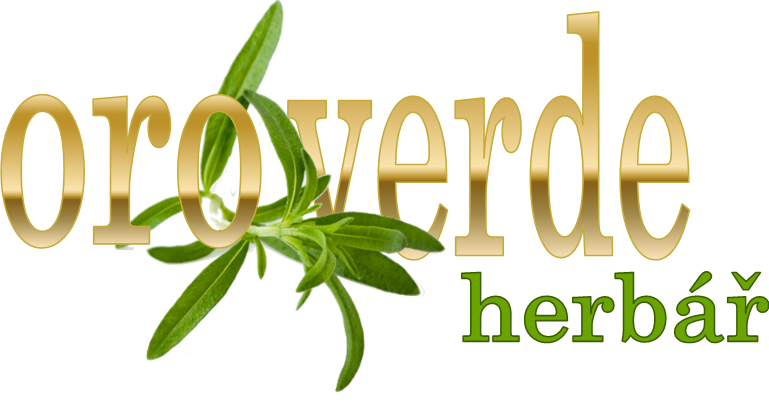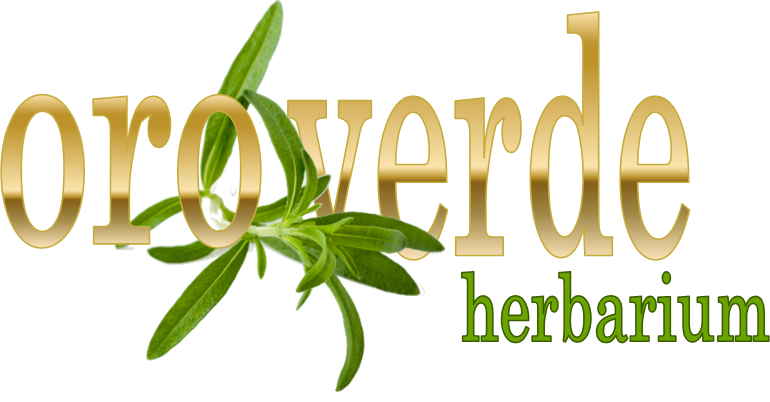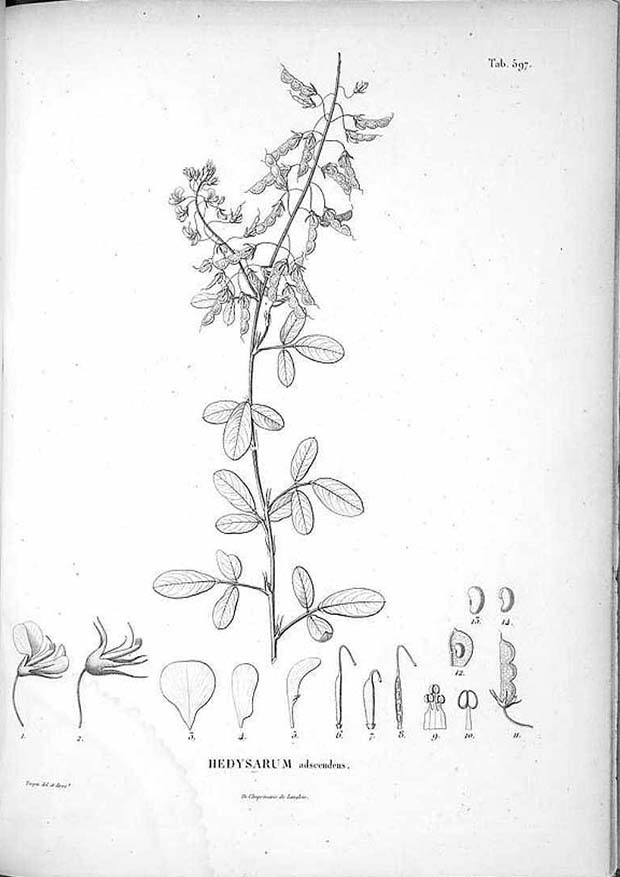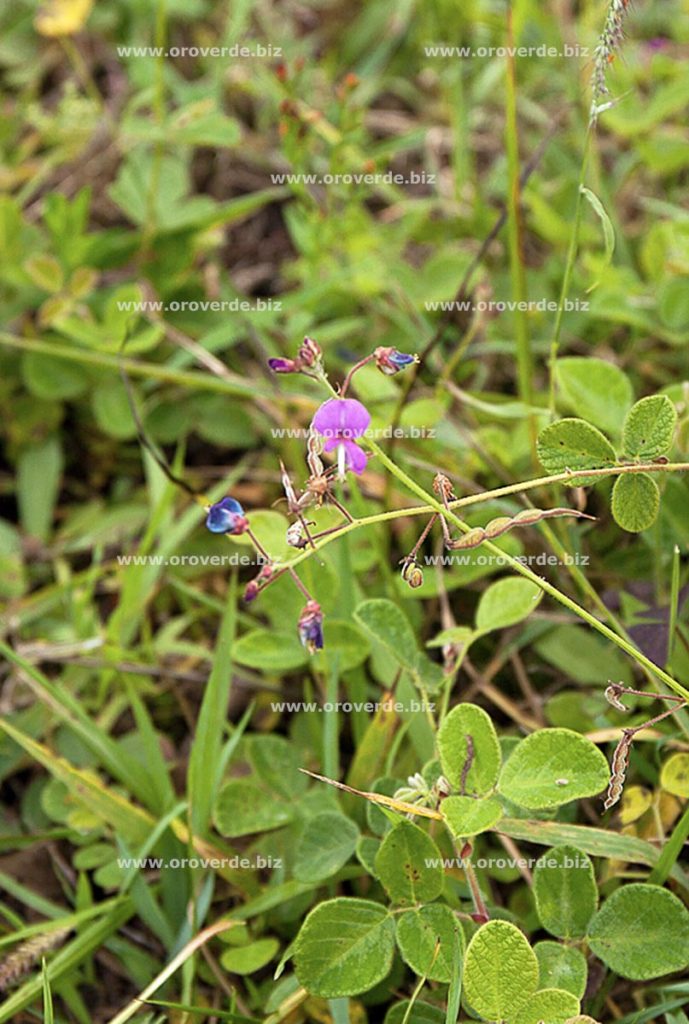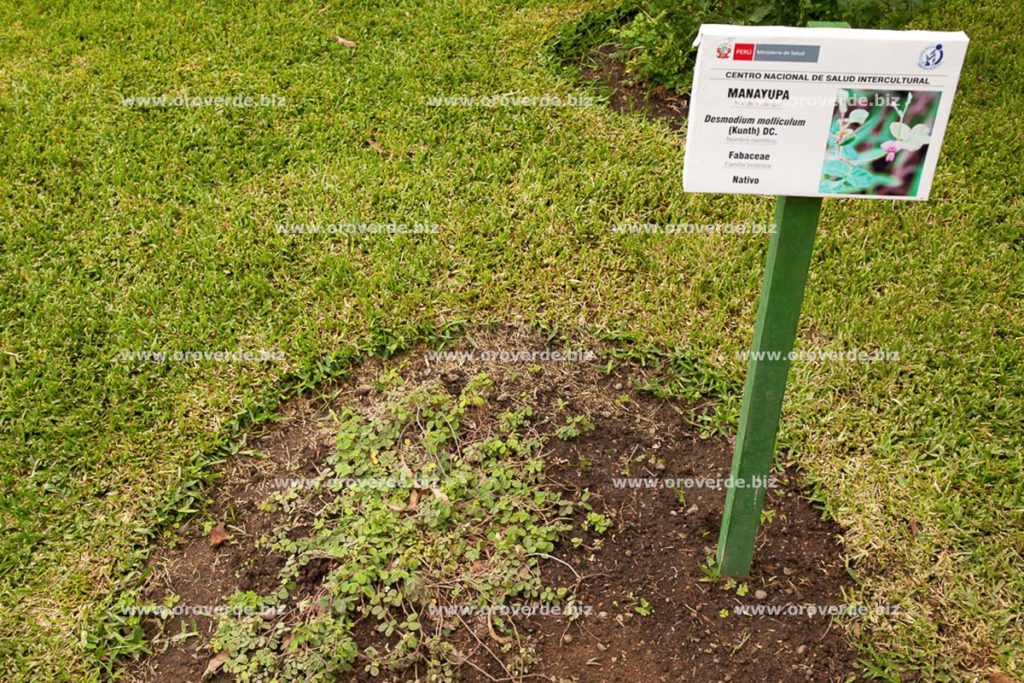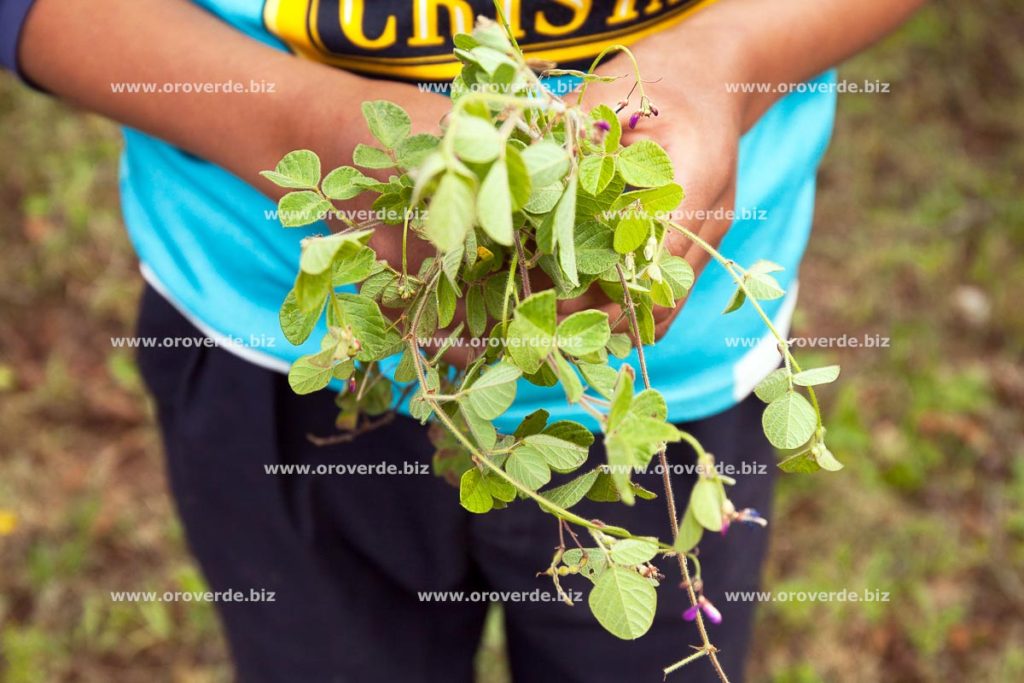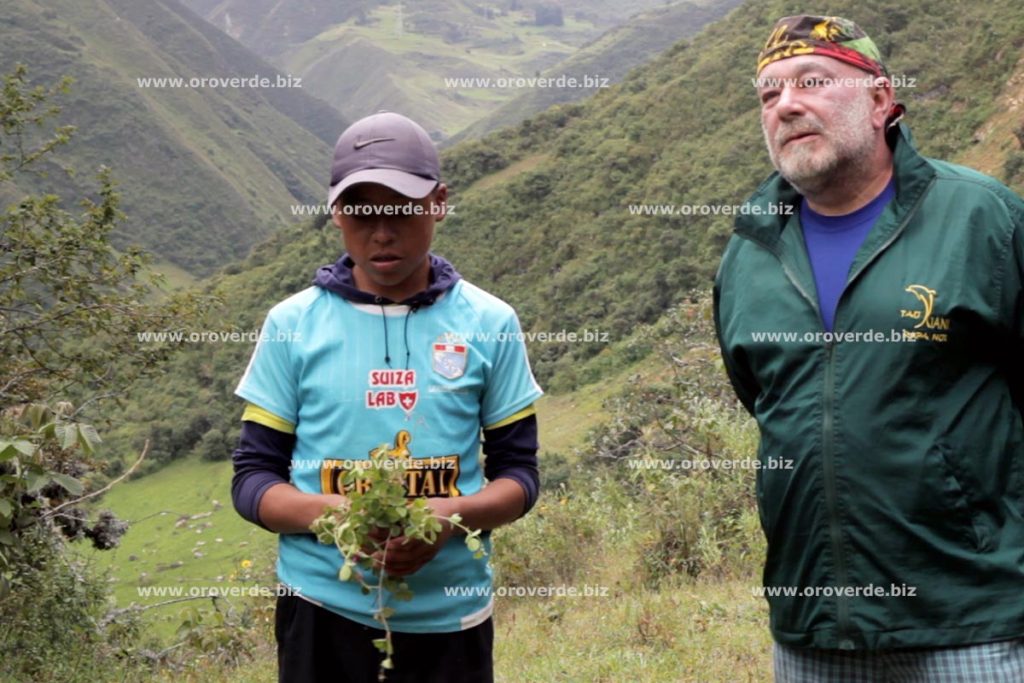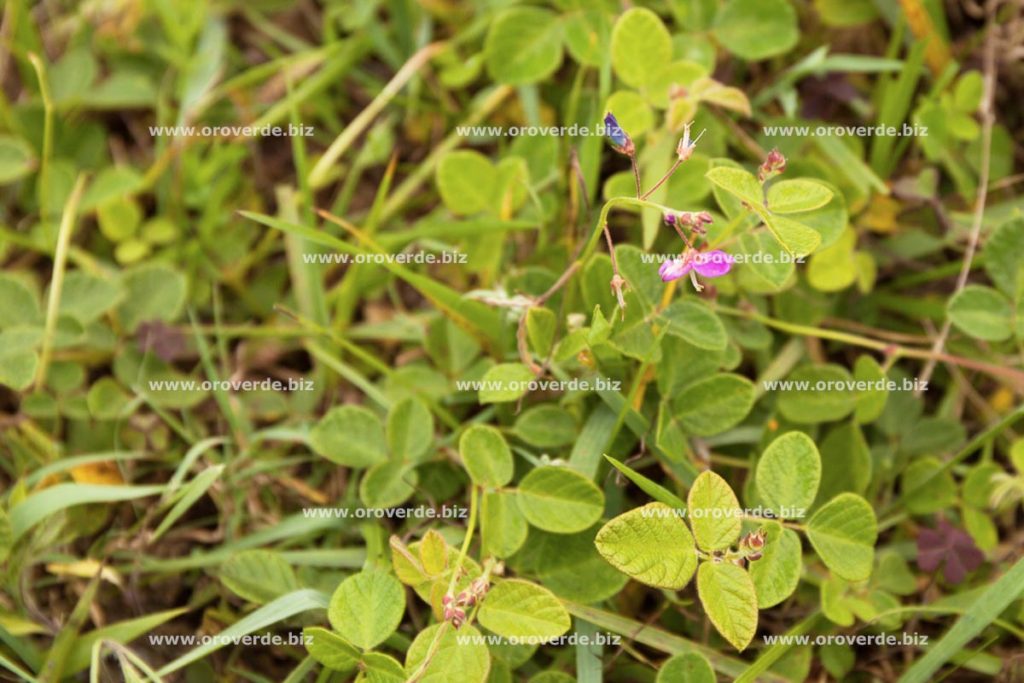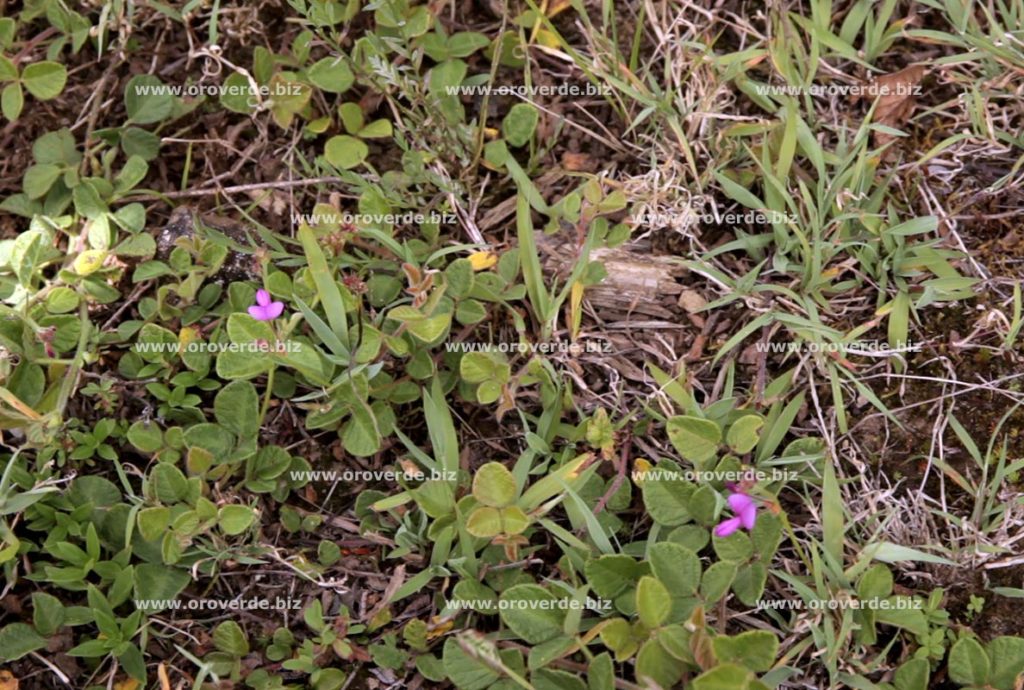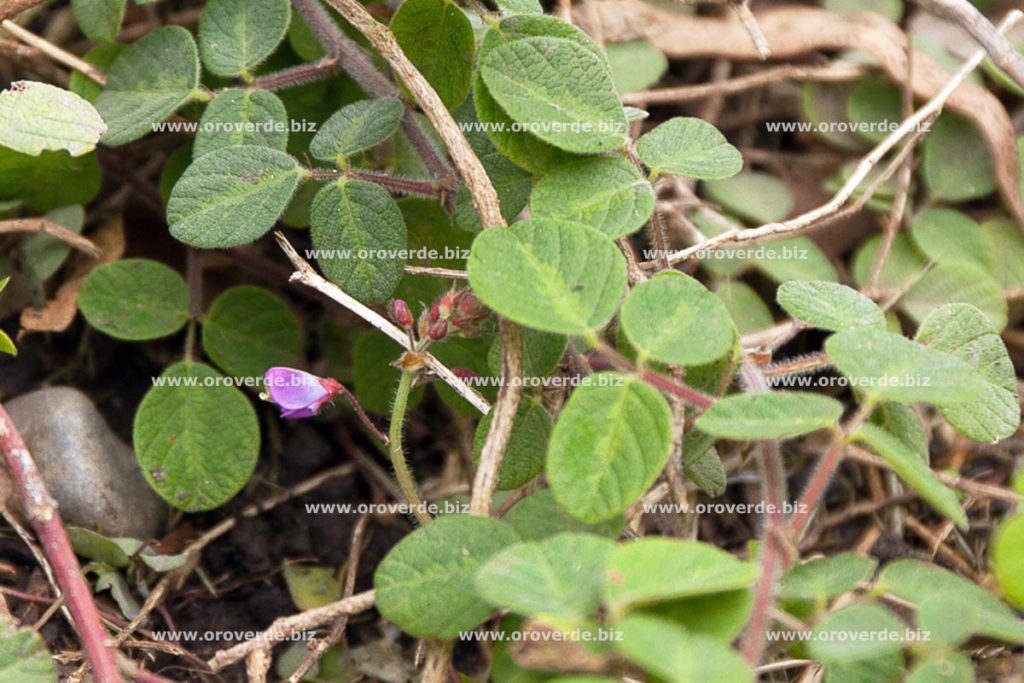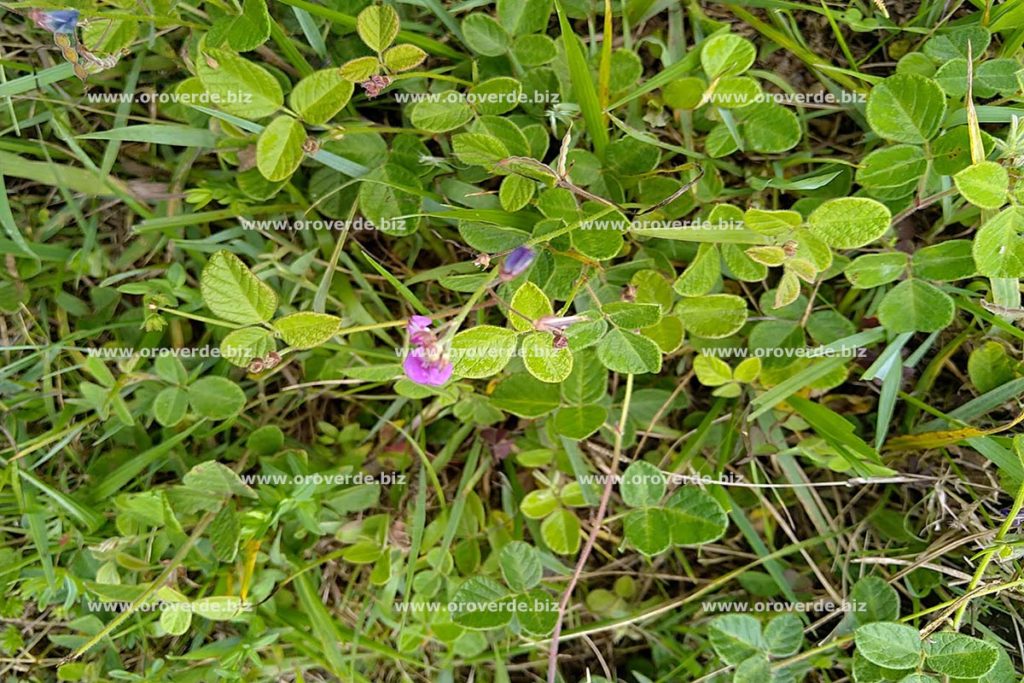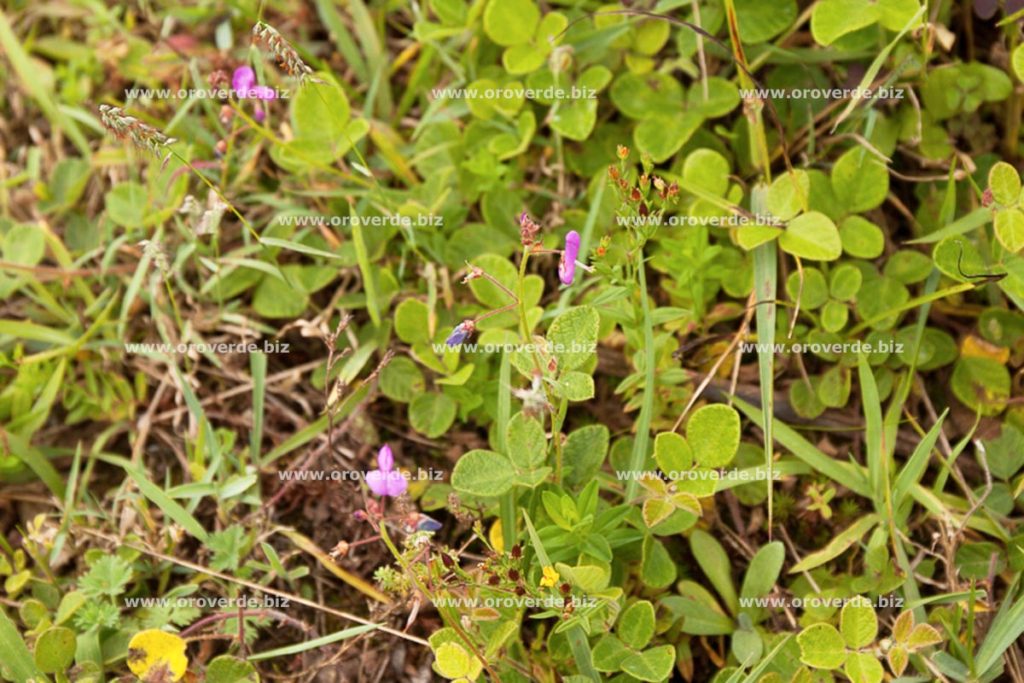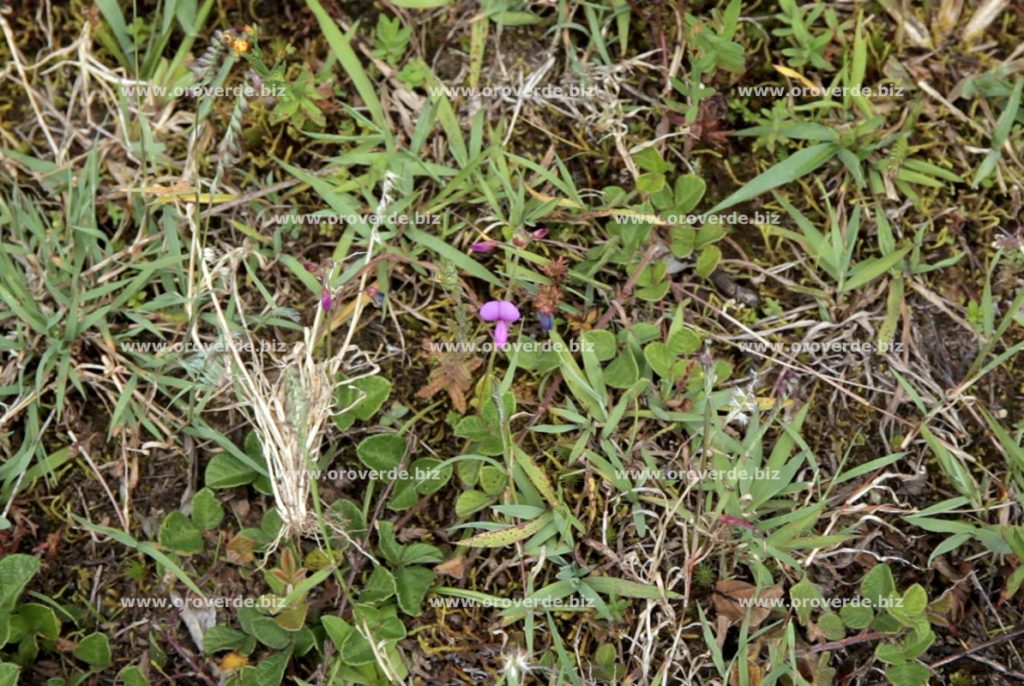It affects the following diseases:
Family: Fabaceae
Genus: Desmodium
Species: ascendens
Common names:
amor seco, runa manayupana, strong back, carrapicho, pega pega, margarita, burbur, mundubirana, barba de boi, mundurana, owon-bocon, dipinda dimukuyi, dusa karnira
Part(s) used:
Above-ground parts of plant (Herba desmodii)
Description:
Desmodium ascendens is a multiple slim plant, furcating it grows up to 50cm of height, produces rich purple red flowerets and yields green fruits/haricots 30cm long. In many tropical regions it can be found on meadows, in open forests, but near the roads as well.
The tribes of the Amazonian rain forest use it today more than in past. A water macerate of the whole plant is administered against nervous difficulties (neuroses) or it is used as an addition into baths for treatment of vaginal infections. Some native Indian tribes believe in its magic spell to return to the lover a lost partner, to whom it should be administered. The tribes from the Rio Pastaza basin (Ecuador) rub the breasts of women in childbed with the leaf brew-up to support lactation. Other tribes use D. ascendens for contraception. The native tribes also use the leaf brew-up against consumption, rub wounds and injuries with crushed fresh leaves mixed with lemon juice and a leaf solution is used for contraception and against cramps (pains) of genitals. Ethnobotanical survey mentions more than 8000 cases from various parts of Brazil, where the brew-up of dried root of D.ascendens is very popular basic remedy against malaria. The natives of Garifuna tribe (Nicaragua) use the leaf brew-up against diarrhoea, veneral diseases and as a digester. Manayupa is very popular in traditional phytomedicine of the Central and South America. Present Peruvian phytotherapy uses a leaf tea for blood purification, detoxification of the organism of the toxins and chemicals from today’s living environment, for kidneys and urinary tract cleansing and for treatment of ovarian problems, such as inflammations and irritations, vaginal discharges and haemorrhages. In Belize, where the plant is called „strong back”, the whole plant is macerated for 24 hours in rum and then 1/4 of a cup taken 3 times a day for the duration of 7 – 10 days as an effective help against back ache. Alternatively, the whole plant is boiled in three cups of water for 10 minutes and one cup of tea is taken before meals for the duration of three to five days against back and muscle aches, kidney difficulties and impotence. Brazilian phytomedicine uses dried leaves for treatment of haemorrhages, body and muscle aches, blennorhagia and diarrhoea. In Ghana the leaf brew-up is used against constipation, dysentery, colics and the leaves are used to cover the wounds. The healers in Ghana use the leaves of manayupa for treatment of bronchial asthma with results so positive that the effects of this plant started to interest the scientists. A clinical study on people carried out in 1977 evidenced that 1-2 teaspoonfuls of dry manayupa leaf powder administered in three partial doses a day led to a remarkable improvement of the patients’ condition and many of them experienced a remission of the malady.
In order to find the mechanism of the action of this natural remedy series of studies on animals were carried out to specify its anti-asthmatic effects. The tests on guinea pigs proved the ability of the orally administered water and ethanol extractions to relieve the anaphylactic contractions and to reduce the level of pulmonary tissue secretions affecting the stimulation of the smooth muscles.
Other studies on guinea pigs showed that the manayupa leaf extraction reduces (depending on dosage) the level of anaphylactic secretion of spasmogens and anaphylactic excitation of intestinal wall contractions. The results of the above mentioned studies carried out on asthmatic patients were summarized by their authors in a quotation: „The studies published so far seem to confirm that D.ascendens is an effective applicable anti-asthmatic agent. It is supported by the results of present research.” Some of recently published researches of arthritis and rheumatism accompanied by various allergic reactions of anaphylactic origin applied successfully D. ascendens. The simplicity of its use in capsules or in tea, high effectiveness of the results with no adverse effects or contra-indications rates D. ascendens on one of the front places in the field of phytotherapy and treatment with natural remedies.
more about preparation of medicinal herbs you can find here
Source:
- Amazonian Ethnobotanical Dictionary, DUKE A.J., VASQUEZ R., C.R.C. Press, Boca Raton, USA, 1994, ISBN 0-8493-3664-3
- De Salvia y Toronjil – Guía de Medicina Natural para la Salud de la Mujer, VARGAS L., VARGAS R., NACCARATO P., Ed. Gráfica Bellindo, Lima, Perú, 1995
- Diccionario enciclopedico de plantas utiles del Perú, BRACK EGG A., CBC – Centro de Estudios Regionales Andinos «Bartolomé de Las Casas» , Cuzco, Perú, 1999, ISBN 9972-691-21-0
- Herbal secrets of the rainforest, TAYLOR L. , Prima Health a division of Prima publishing, CA, USA, 1998, ISBN 0-7615-1734-0
- Jihoamerické léčivé rostliny a jejich užití středoevropskou populací, DORAZIL M., ZF MENDELU, Lednice na Moravě, 2007
- Manual de fitoterapia, LOPEZ VILLAR M., VARGAS VILLAVICENCIO O., Programa Nacional de Medicina Complementaria del Seguro Social de Salud – EsSalud, Lima, Perú, 2001, ISBN 9972-758-34-3
- Salud para todos, LACANZE D., ALEXIADES M., Fenamed, Madre de Dios, CBC – Centro de Estudios Regionales Andinos «Bartolomé de Las Casas», Cuzco, Perú, 1995, ISBN 84-8387-023-1
- The Healing Forest, SCHULTES E.R., RAFFAUF R.F., DioscoridesPress, Portland (OR), USA, 1992, ISBN 0-931146-14-3
- Vocabulario de los nombres vulgares de flora peruana, SOUKUP J. SDB, Editoria Salesiana, Lima, Perú, 1975
- Ziololecznictwo amazońskie i andyjskie, ŹUROWSKA K., TowerPress, Gdańsk, Polska, 2001, ISBN 83-87342-41-6.
